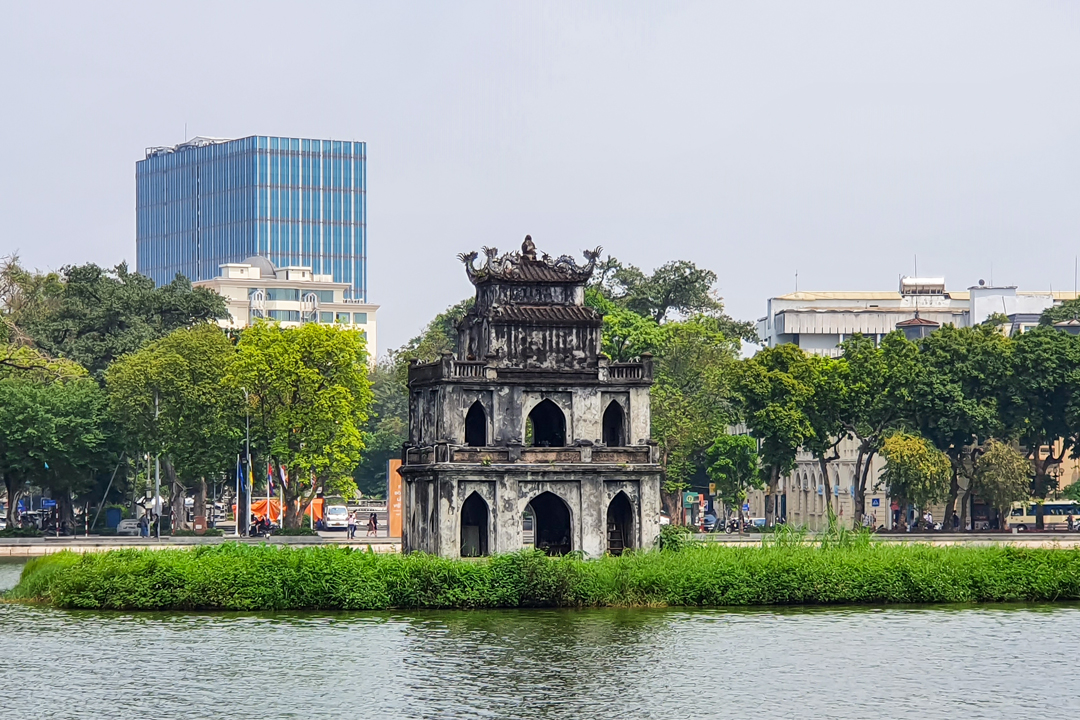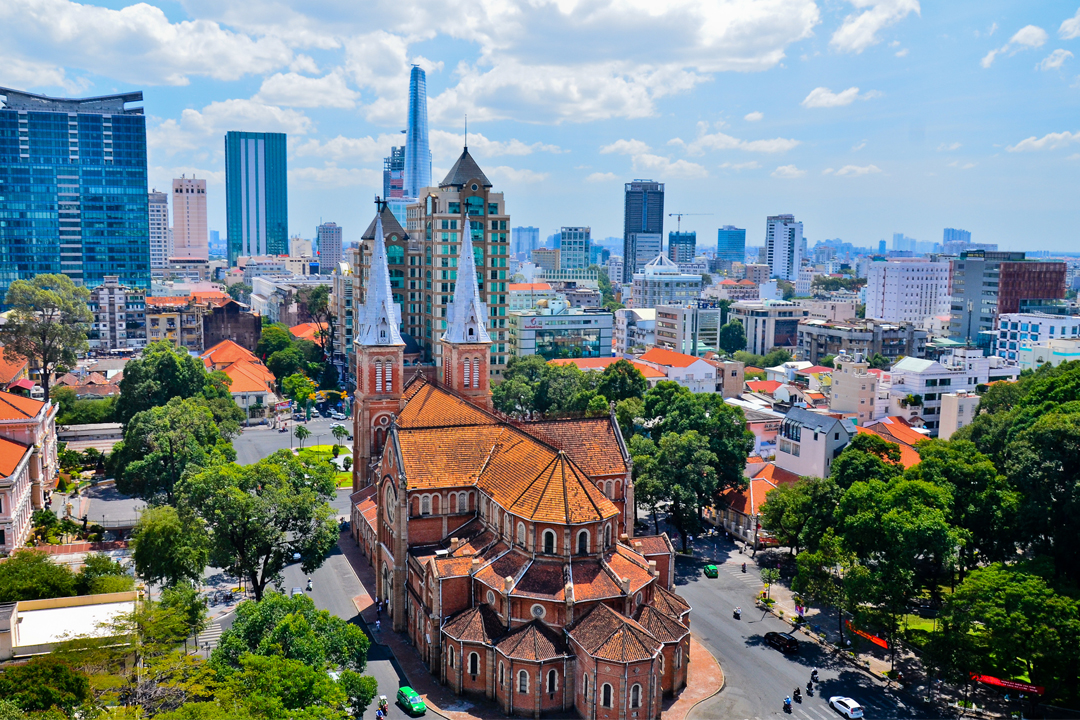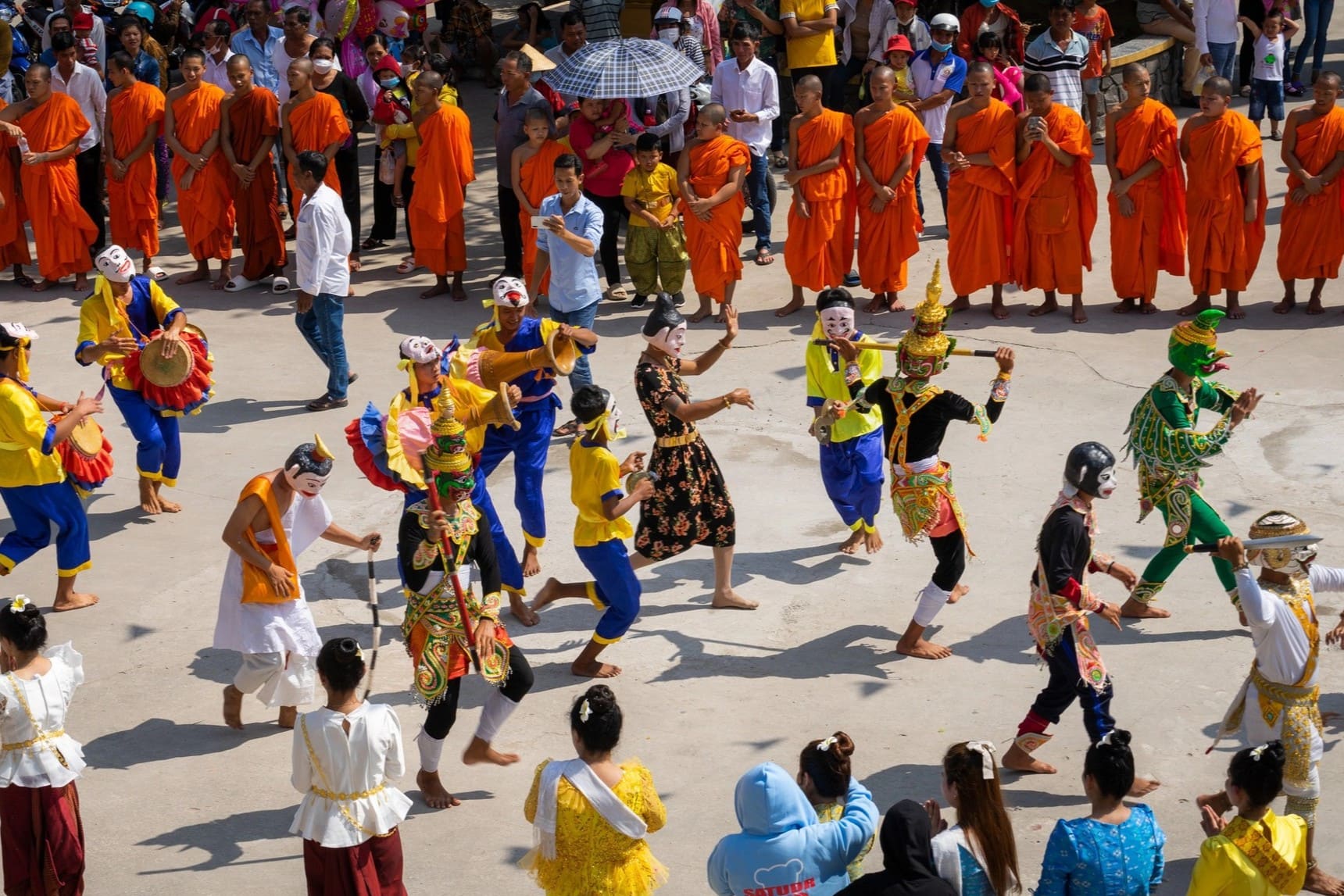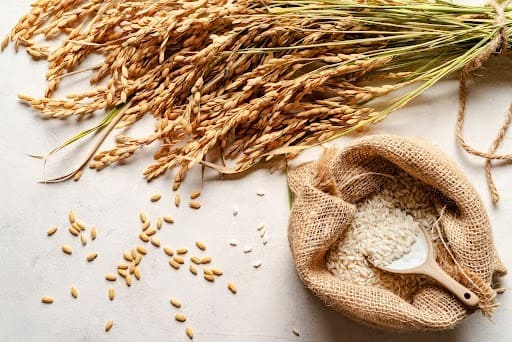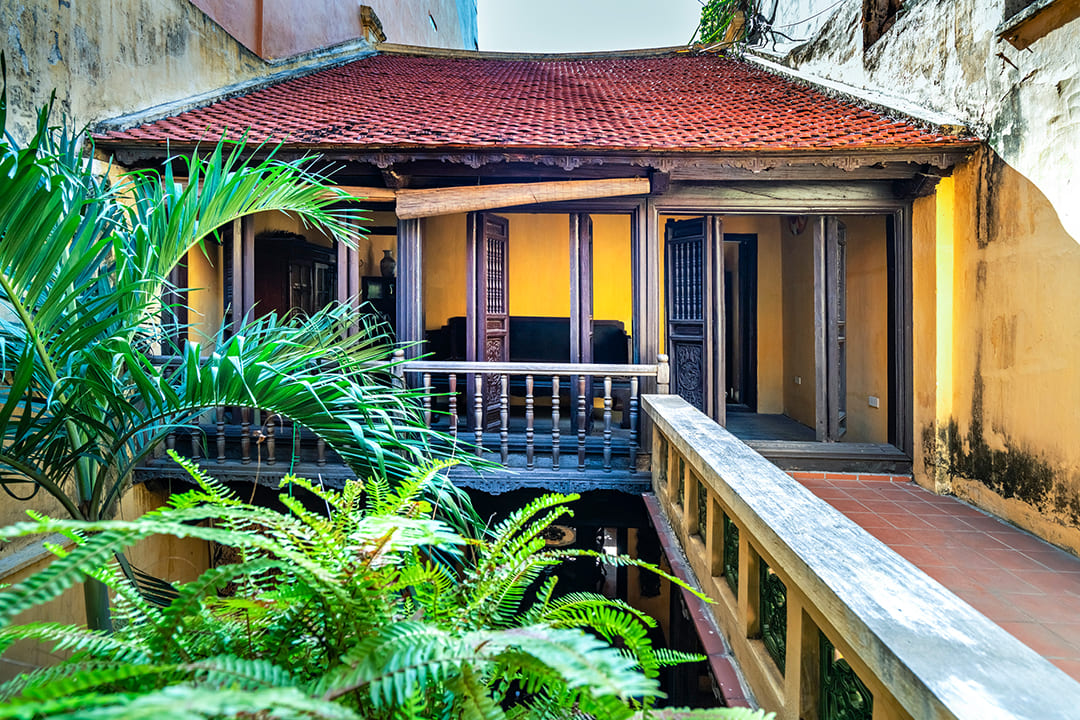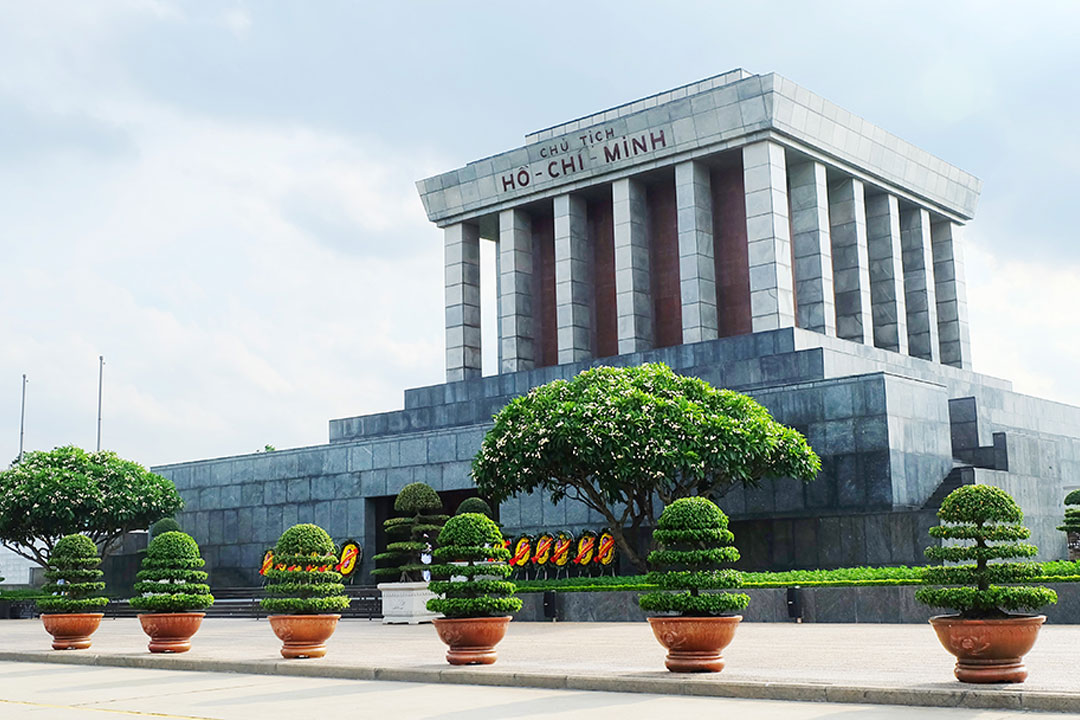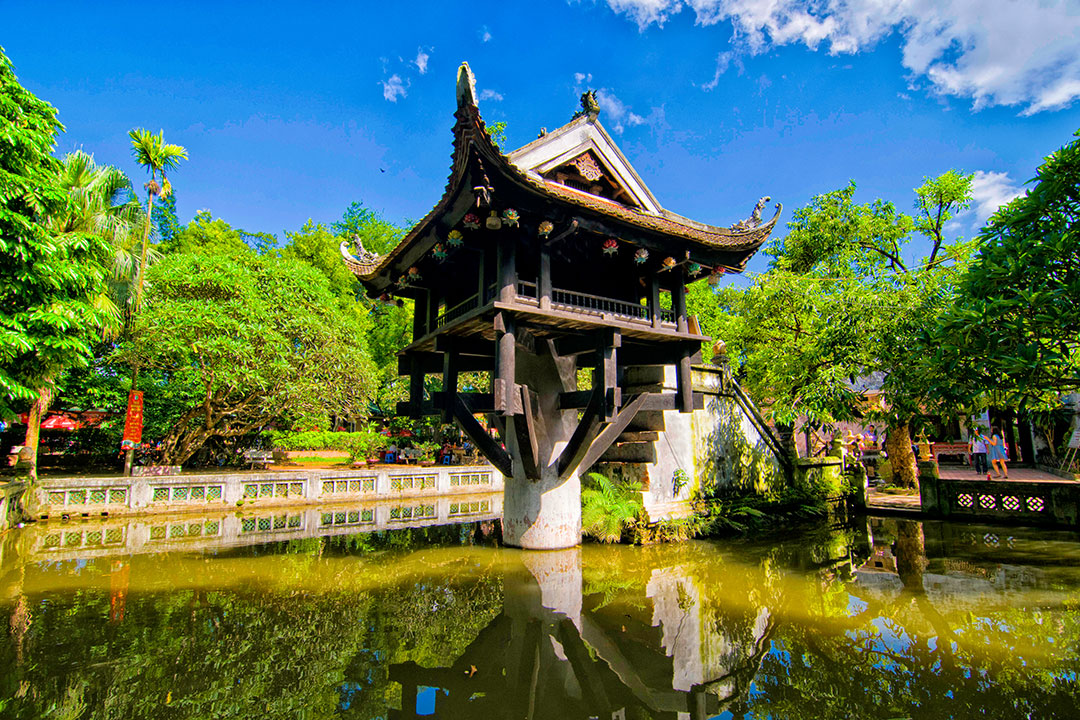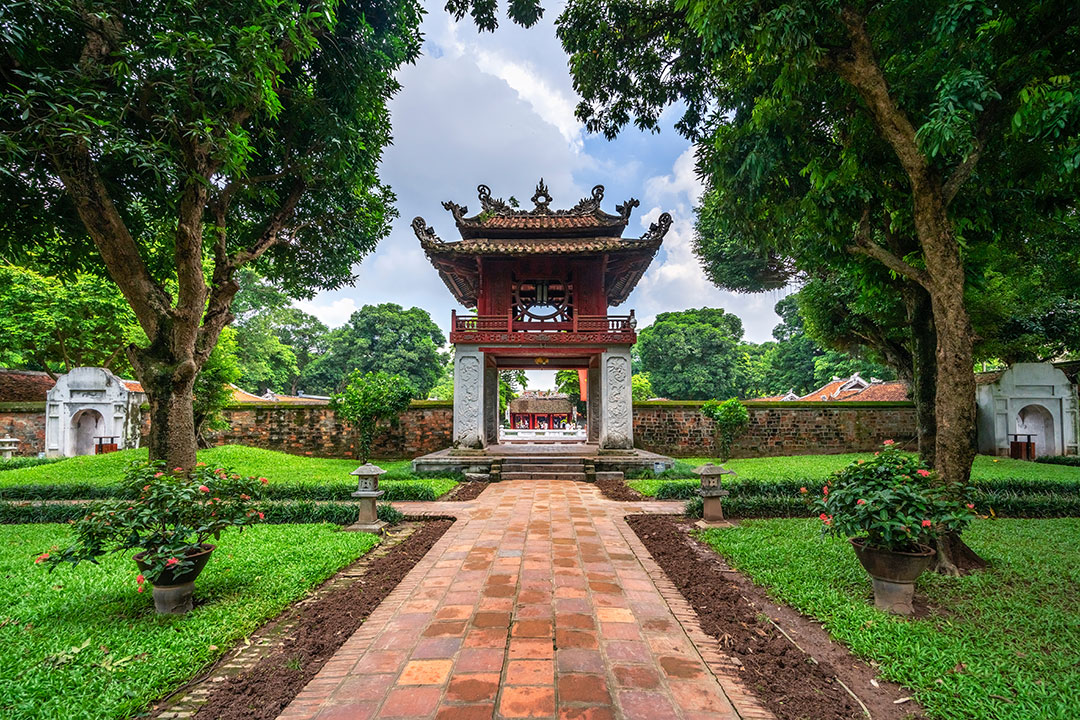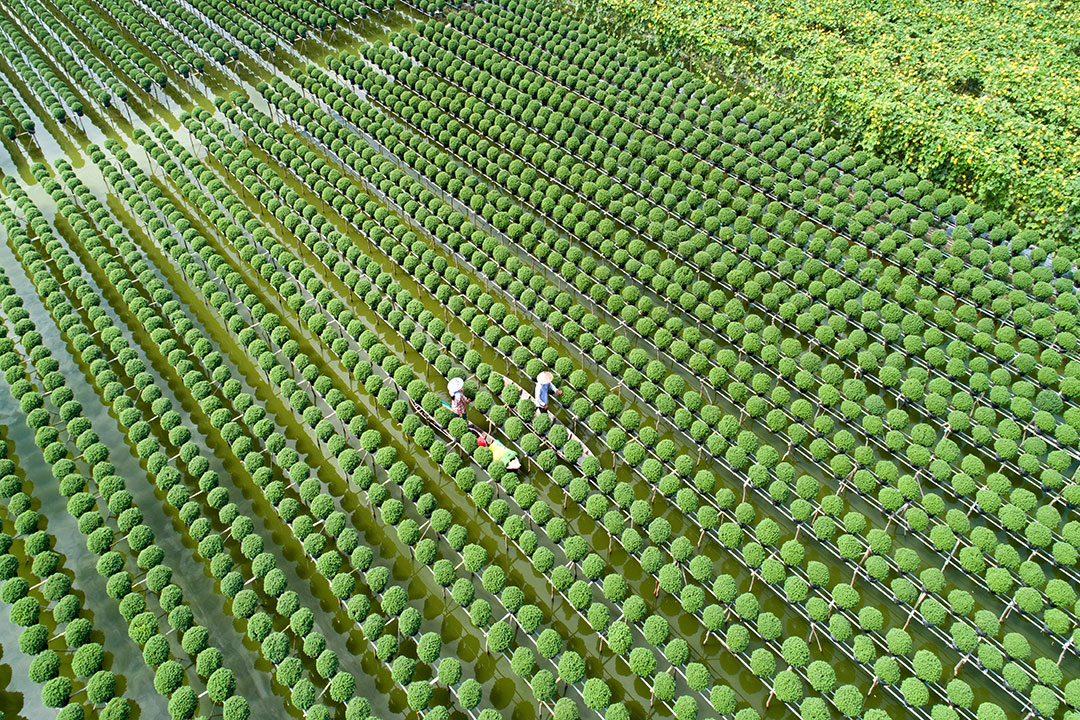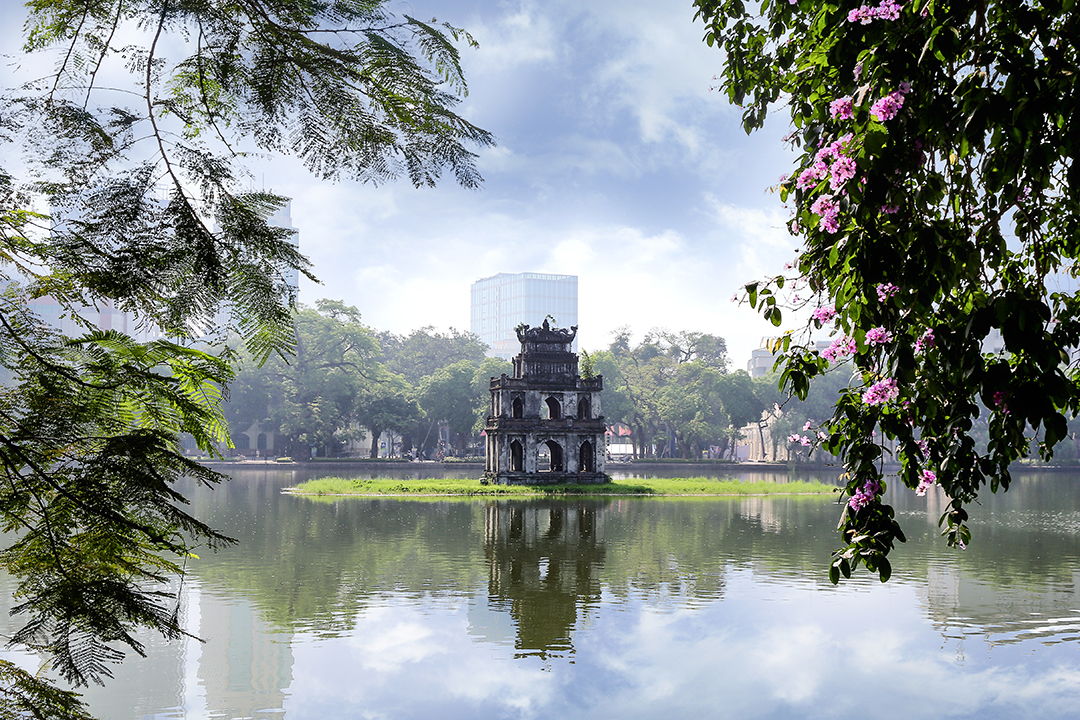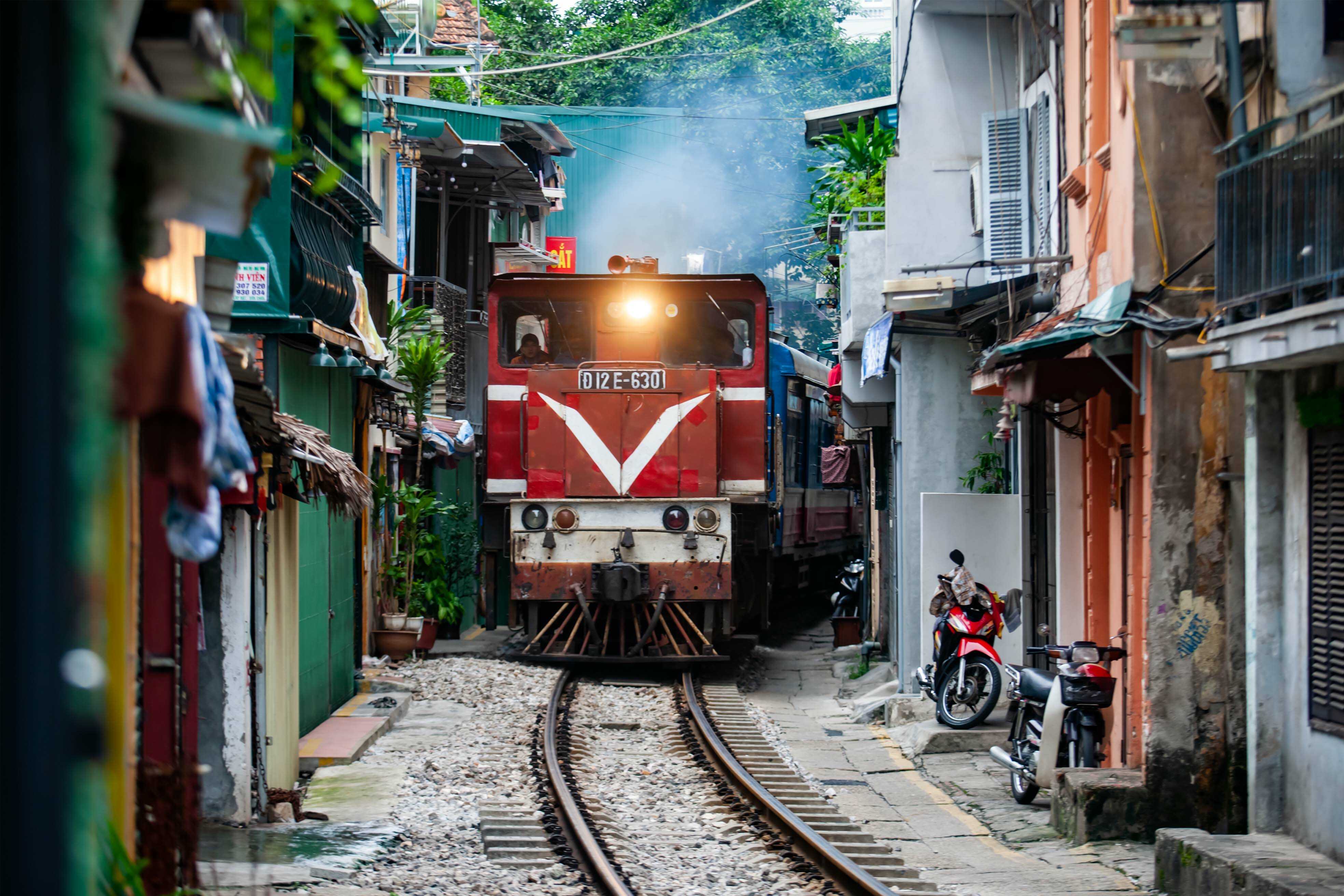Ma May Ancient House: History, Architecture, Things To Do & Travel Guide
Located at 87 Ma May Street in Hanoi’s bustling Old Quarter, Ma May Ancient House offers a rare glimpse into Vietnam’s rich architectural and cultural heritage. This well-preserved home offers more than just a look into traditional Vietnamese living spaces. It opens a door to the past, where every wooden beam, tiled roof, and antique furnishing tells a story.
In a fast-changing world of modern construction, ancient houses like this one carry a timeless charm, reflecting the craftsmanship, resilience, and way of life from generations long gone. In this article, GTrip invites you to experience the unique atmosphere of Ma May Ancient House.
History of Ma May Ancient House
Ma May Ancient House stands as a remarkable testament to Hanoi's rich architectural heritage, with a fascinating history spanning over a century. Built in the late 19th century during the Nguyen dynasty, this historic structure was originally commissioned by a wealthy Vietnamese merchant seeking both a family residence and a commercial space.
The house exemplifies the distinctive "tube house" architectural style that characterizes Hanoi's Old Quarter. This unique design was developed as a practical response to historical Vietnamese tax policies that charged property owners based on street frontage width. These tube houses became the signature architectural format for merchant homes throughout the commercial districts of ancient Hanoi.
Throughout its existence, the property changed hands several times, hosting various merchant families engaged in different trades:
- Early period (late 19th century): Originally owned by rice merchants
- Early 20th century: Became home to traditional herbal medicine traders
- Mid-20th century: Hosted other commercial activities typical of the Old Quarter
- 1954-1998: Divided and allocated to five different families as communal housing
The post-war period brought significant challenges to the ancient structure. Following the end of French colonization and during Vietnam's complex political transitions, many historical buildings throughout Hanoi were repurposed as multi-family dwellings. Between the late 1950s and 1998, Ma May Ancient House was allocated to five separate families, resulting in makeshift modifications that compromised its architectural integrity and historical authenticity.
The turning point for the house came in 1998 with a significant restoration project launched in collaboration with the city of Toulouse, France. It was a part of a broader Vietnamese-French initiative to preserve cultural heritage. Completed in 1999, the restoration focused on maintaining the authenticity of the house by preserving its original wooden framework, carved decorative details, and traditional ceramic tile roof. Damaged sections were carefully rehabilitated using traditional materials and techniques to ensure historical accuracy. This meticulous work helped revive the house's architectural integrity while honoring its cultural and historical value.
The Ma May Ancient House officially opened to the public on October 27, 1999, following its comprehensive restoration. Its historical and cultural significance was formally recognized in 2004 when the Vietnamese Ministry of Culture designated it as a National Heritage Site. Moreover, they cemented its status as one of Hanoi's most important preserved historical dwellings.
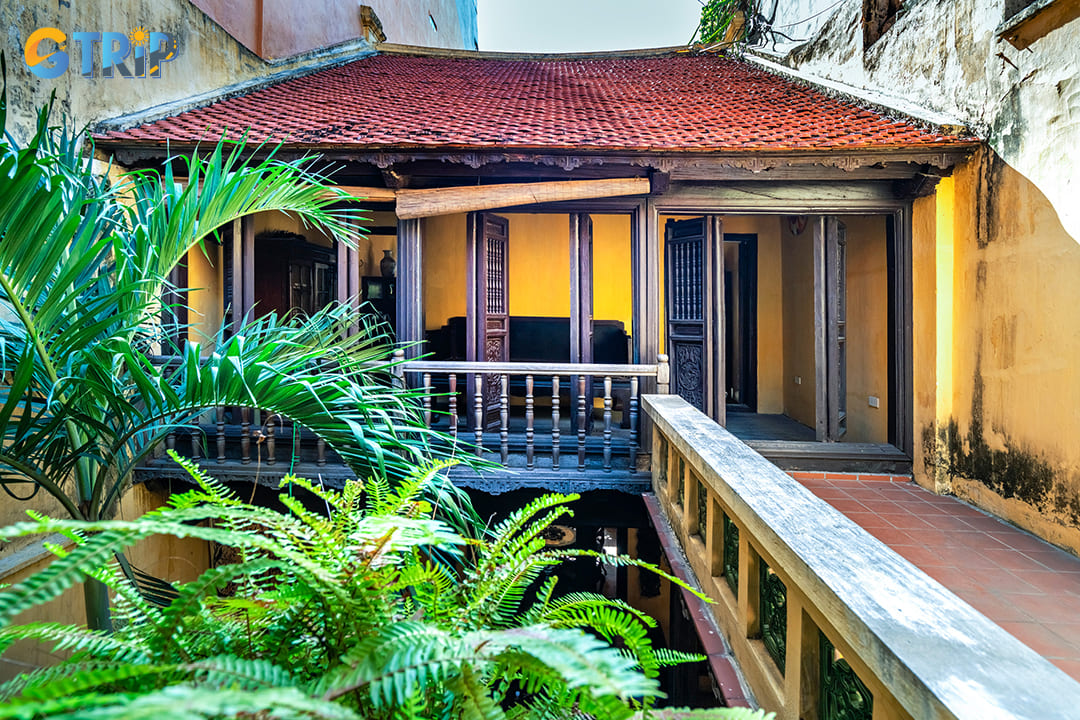
The house exemplifies the distinctive "tube house" architectural style that characterizes Hanoi's Old Quarter
The architecture of Ma May Ancient House
Ma May Ancient House stands as a meticulously preserved example of traditional Vietnamese architecture in Hanoi's bustling Old Quarter. This 157.6-square-meter property embodies the distinctive "tube house" design that evolved during the 19th century. It is characterized by its remarkably narrow street frontage (only 5 meters wide) that extends deeply into the block, gradually widening to 6 meters at the back, a layout believed to symbolize growing prosperity.
The architectural style represents a harmonious fusion of Vietnamese and Chinese influences, evident in every detail of its wooden framework. The house features a classic two-story structure with a sturdy wooden frame supporting a traditional tiled roof. Perhaps the most ingenious element of the design is the central courtyard, which serves as the home's natural lung, providing essential light and ventilation to the otherwise enclosed spaces. This architectural solution was particularly important in the densely packed Old Quarter, where buildings share walls and access to natural light is limited.
The facade of Ma May Ancient House is distinguished by its large street-facing window, a practical design element that once served as the commercial interface for the merchant family who owned it. This feature exemplifies the dual residential-commercial function that characterized many traditional homes in Hanoi's trading district, allowing families to conduct business directly from their living space.
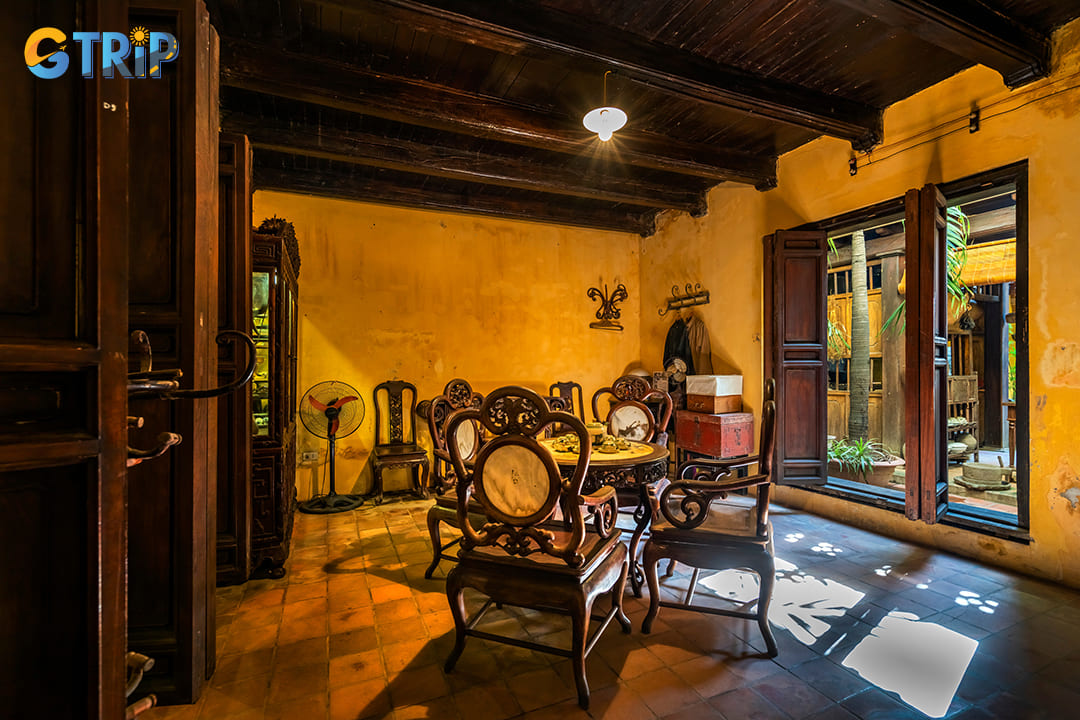
Ma May Ancient House stands as a meticulously preserved example of traditional Vietnamese architecture
Inside, the house follows a traditional spatial organization:
- Ground floor arrangement:
- A spacious formal living room for receiving guests
- A family dining area for meals and gatherings
- A traditional kitchen with original cooking implements
- Direct access to the central courtyard
- Upper floor components:
- Three distinct bedrooms are arranged for family privacy
- Private family quarters are separated from public spaces
- Wooden partitions create flexible living arrangements
- Additional architectural elements:
- A functional mezzanine level used primarily for storage
- Wooden staircases connect the different levels
- Carefully positioned windows for cross-ventilation
The craftsmanship throughout Ma May Ancient House showcases exceptional attention to detail, particularly in the intricate wooden carvings adorning beams, columns, and furniture. These decorative motifs incorporate traditional symbols of luck, longevity, prosperity, and protection. Common motifs include stylized dragons, phoenixes, flowers, and geometric patterns that reflect both Vietnamese cultural values and Chinese influences.
The house remains furnished with period artifacts, including ancestral altars, traditional furniture, and household implements. They provide tourists with an authentic glimpse into the daily life of well-to-do Hanoian merchants during the late 19th and early 20th centuries.
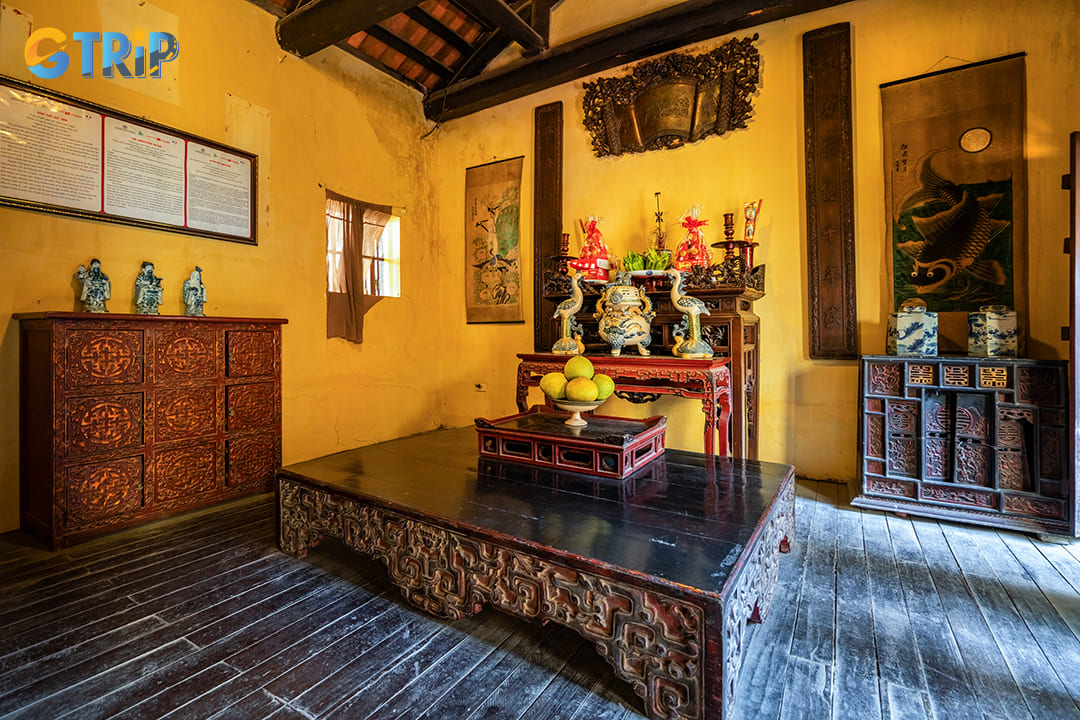
The craftsmanship throughout Ma May Ancient House showcases exceptional attention to detail
Things to do at Ma May Ancient House
Ma May Ancient House offers tourists a captivating journey into Vietnam's cultural heritage through immersive experiences. The house provides multiple ways to connect with Hanoi's rich history and authentic Vietnamese lifestyle.
Explore traditional Vietnamese architecture
The ancient house at 87 Ma May Street presents a remarkable opportunity to experience authentic Vietnamese architecture from the late 19th century. As you wander through this meticulously preserved building, you'll discover the distinctive features that characterize traditional Vietnamese homes.
The house exemplifies the tube house style, with its narrow facade and extended depth, a design that evolved in response to taxation policies based on street frontage. Inside, you can observe:
- Wooden structural elements crafted from precious hardwoods like ironwood
- Carved decorative details featuring traditional motifs and symbols
- Multiple courtyards that provide natural ventilation and light
- Ancestral altars showcasing Vietnamese spiritual traditions
- Original furniture pieces reflecting the lifestyle of merchant families
Take time to notice how the architectural elements serve both practical and aesthetic purposes. The open courtyards not only create airflow but also connect residents with nature, while carved wooden screens offer both beauty and privacy between rooms.
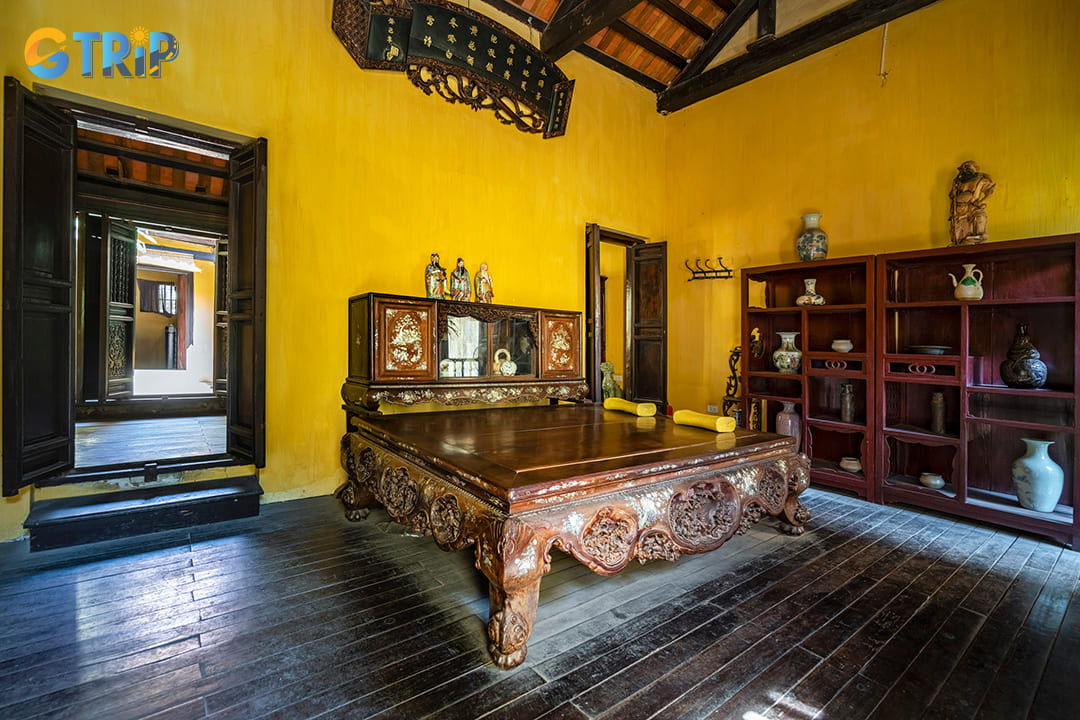
As you wander through this meticulously preserved building, you'll discover the distinctive features that characterize traditional Vietnamese homes
Take photos with a vintage vibe
Ma May Ancient House offers exceptional photography opportunities with its atmospheric lighting and historical setting. The house's atmospheric ambiance, with light filtering through wooden screens and courtyards, creates a naturally photogenic environment perfect for capturing memorable images.
Photography enthusiasts will appreciate the following vintage-inspired photo opportunities:
| Location | Photo opportunity | Best time |
|---|---|---|
| Main courtyard | Natural light streaming through wooden latticework | Morning (9-10 AM) |
| Traditional kitchen | Authentic cooking implements and earthenware | Midday (good interior lighting) |
| Bedroom areas | Antique furniture and period decor | Afternoon (2-4 PM) |
| Ancient tea area | Traditional tea ceremony settings | Any time (atmospheric) |
| Wooden staircase | Architectural details and carved elements | Early morning |
For the best photography experience, arrive early in the morning when visitor numbers are lower and light conditions are optimal. Many tourists dress in traditional Vietnamese clothing (ao dai) available for rent nearby to enhance their photos with authentic period styling.

Ma May Ancient House offers exceptional photography opportunities with its atmospheric lighting and historical setting
Attend "Chuyen Pho Hang" tour
The “Chuyen Pho Hang” tour at Ma May Ancient House is a unique cultural experience that transports you back to Hanoi in the 1930s and 1940s. Set inside the historic home at 87 Ma May Street, the tour recreates the daily life of a traditional Hanoian family through immersive storytelling, interactive activities, and a live performance. Guests can try hands-on practices like grinding herbs, making traditional medicine pills, and using mugwort for wellness treatments. These offer insight into the lifestyle of a family working in traditional medicine. A highlight of the experience is a 30-minute theatrical play that uses expressive body language and minimal dialogue, making it accessible to both Vietnamese and international audiences. Developed with input from historians and traditional medicine experts, the performance ensures authenticity and historical depth.
Time: Every Friday, Saturday, and Sunday from 19:30 to 21:30.
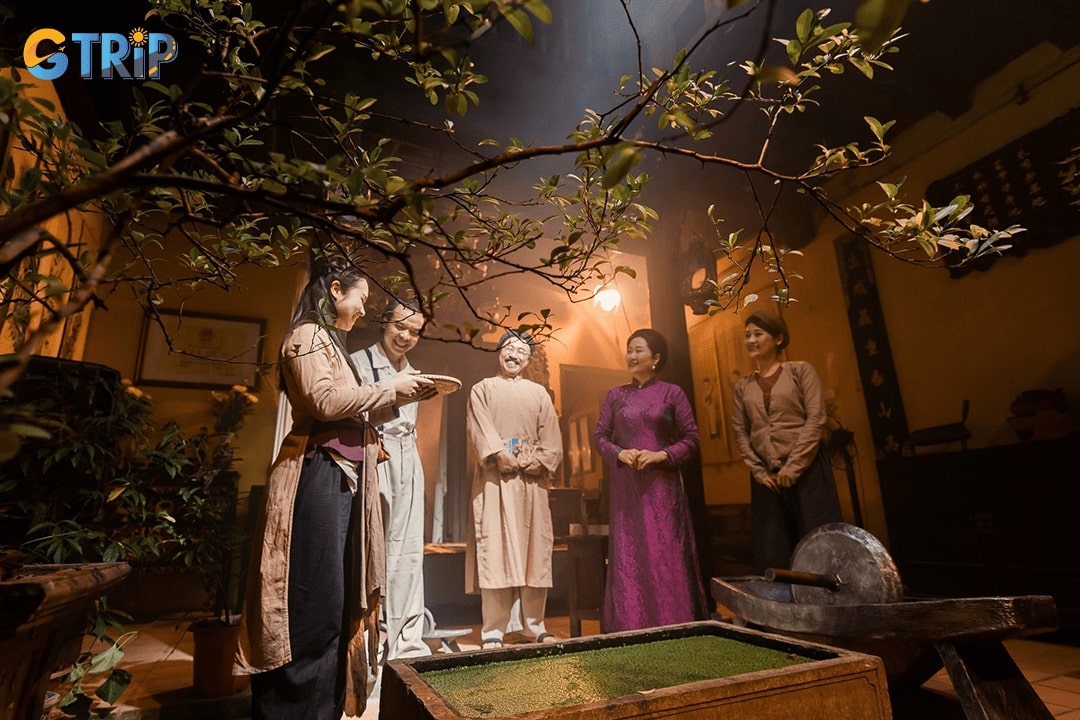
The “Chuyen Pho Hang” tour at Ma May Ancient House is a unique cultural experience that transports you back to Hanoi in the 1930s and 1940s
Opening hours and entrance fees of Ma May Ancient House
Ma May Ancient House offers tourists a glimpse into traditional Hanoi life, with convenient visiting hours and affordable entrance fees that make it accessible to various types of travelers.
Visiting hours
Ma May Ancient House welcomes visitors daily with standard opening hours:
- Morning session: 8:00 AM to 12:00 PM
- Afternoon session: 1:30 PM to 5:30 PM
- Lunch break: 12:00 PM to 1:30 PM (closed during this time)
- Best visiting time: Early morning (8:00-10:00 AM) to avoid crowds and enjoy better lighting for photography
During peak tourist seasons (October to April), arriving early is recommended as the narrow spaces within the ancient house can become crowded, particularly in the afternoon hours.
Entrance fees and discounts
The entrance fees for Ma May Ancient House are quite reasonable, making it an affordable cultural attraction in Hanoi:
| Visitor category | Fee (VND) | Fee (USD approx.) | Notes |
|---|---|---|---|
| Standard adult | 20,000 | $0.85 | Effective January 2, 2025 |
| Children (under 16) | Free | Free | Must be accompanied by adults |
| Students | 10,000 | $0.42 | Valid student ID required |
| Elderly visitors | 10,000 | $0.42 | 50% discount with ID |
| People with disabilities | 10,000 | $0.42 | 50% discount with documentation |
Special promotions:
- Free admission on Vietnam Cultural Heritage Day (November 23)
- Group discounts may be available for parties of 10 or more people (inquire at the ticket counter)
- Photography is permitted without additional fees (unlike some other heritage sites)

Ma May Ancient House offers visitors a glimpse into traditional Hanoi life, with convenient visiting hours and affordable entrance fees
How to get to the Ma May Ancient House in Hanoi?
Reaching this cultural gem is straightforward with several transportation options available depending on your preferences, budget, and location within the city. Here's a comprehensive guide to help you navigate your way to this historical treasure.
By walking
Walking is undoubtedly the most immersive way to experience Ma May Ancient House and its surroundings. The Old Quarter of Hanoi is a pedestrian-friendly area where walking allows you to absorb the authentic atmosphere of the neighborhood.
If you're staying within the Old Quarter or Hoan Kiem Lake area, Ma May Ancient House is easily accessible on foot:
- From Hoan Kiem Lake: Head north for approximately 600 meters (about 7-10 minutes walking)
- From St. Joseph's Cathedral: Walk east for about 800 meters (roughly 10-12 minutes)
- From Dong Xuan Market: Head south for about 500 meters (approximately 6-8 minutes)
Walking saves you money and offers the opportunity to discover hidden coffee shops, local food stalls, and craft stores that line the narrow streets of Hanoi's historic district. The sensory experience of navigating through the lively alleyways is an attraction in itself.
By taxi or ride-hailing services
For those staying outside the Old Quarter or seeking a more comfortable option, taxis and ride-hailing services like Grab, Be, and Xanh SM are reliable choices. These apps allow you to input your destination in English, reducing language barriers and ensuring smoother communication. Most drivers will drop you off near Ma May Street, as some sections may be pedestrian-only during certain hours.
Estimated fares:
- From West Lake (5 km):
- Traditional taxi: 80,000 - 100,000 VND ($3.30 - $4.20)
- Grab/Be: 70,000 - 90,000 VND ($2.90 - $3.80)
- From Hanoi Railway Station (3 km):
- Traditional taxi: 50,000 - 70,000 VND ($2.10 - $2.90)
- Grab/Be: 45,000 - 65,000 VND ($1.90 - $2.70)
These services are available 24/7 and offer real-time fare estimates and navigation, making them ideal for both first-time and returning travelers.

For those staying outside the Old Quarter or seeking a more comfortable option, taxis and ride-hailing services are reliable choices
By cyclo
For a charming and traditional experience, consider riding a cyclo through Hanoi’s atmospheric streets. This open-air journey is ideal for travelers who want to soak in the Old Quarter’s sights and sounds at a slower pace. Cyclos are especially popular for short scenic rides.
Typical fares:
- Short ride (15 - 20 minutes): 100,000 - 150,000 VND ($4.20 - $6.30)
- Medium ride (20 - 30 minutes): 150,000 - 200,000 VND ($6.30 - $8.40)
- Hourly rate: 200,000 - 250,000 VND ($8.40 - $10.50)
Tips: Always agree on the fare beforehand, bring small bills, and ask your hotel to recommend a reputable cyclo driver. Some drivers may also offer brief commentary about key landmarks along the way.
By bus
Hanoi’s public bus system is the most economical way to reach Ma May Ancient House, with fares ranging from 7,000 - 10,000 VND ($0.30 - $0.45) per ride. While it requires a bit more navigation, it’s a great option for budget-conscious travelers.
Recommended routes:
- Bus #8: Long Bien - Giap Bat
- Bus #31: My Dinh - Chuong Duong Do
- Bus #36: Yen Phu - Giap Bat
Get off near Hang Buom Street or Hang Dao Street, then walk around 5 - 10 minutes to 87 Ma May Street. Buses operate from 5:00 AM to around 9:00 PM, with departures every 15 - 20 minutes during busy hours. For easier navigation, use Google Maps or a transit app to track your route and stops.
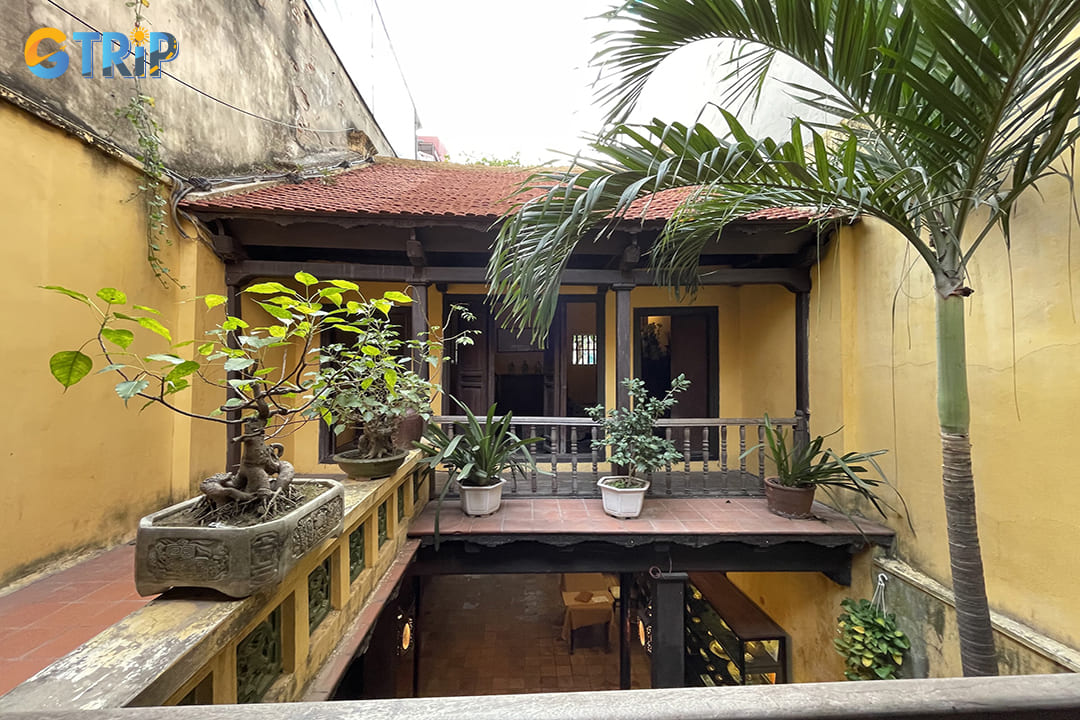
Hanoi’s public bus system is the most economical way to reach Ma May Ancient House
Travel tips when visiting Ma May Ancient House
Planning a visit to Ma May Ancient House requires some preparation to fully appreciate this historical gem in Hanoi's Old Quarter. These practical tips will help you make the most of your experience at this well-preserved merchant's home.
- Visit early or late: Avoid peak hours (10 AM - 2 PM) by coming before 9 AM or after 3 PM for fewer crowds and better photos.
- Wear slip-on shoes: You'll need to remove footwear inside, so easy-to-remove shoes are ideal.
- Dress modestly: Covered shoulders and knees are appreciated at this cultural site.
- Bring small bills: The entry fee is low, and having exact change is helpful.
- Hire a guide: There’s limited English signage, so a local guide can enhance your visit.
- Allow 45 - 60 minutes: The house is compact but rich in detail, worth exploring slowly.
- Be gentle: Avoid leaning on railings or touching fragile wooden elements.
- Visit on weekdays: Weekdays are less crowded than weekends.
- Plan nearby stops: Combine your visit with other Old Quarter landmarks.
- Follow photo rules: Some areas may restrict flash or photography to protect artifacts.
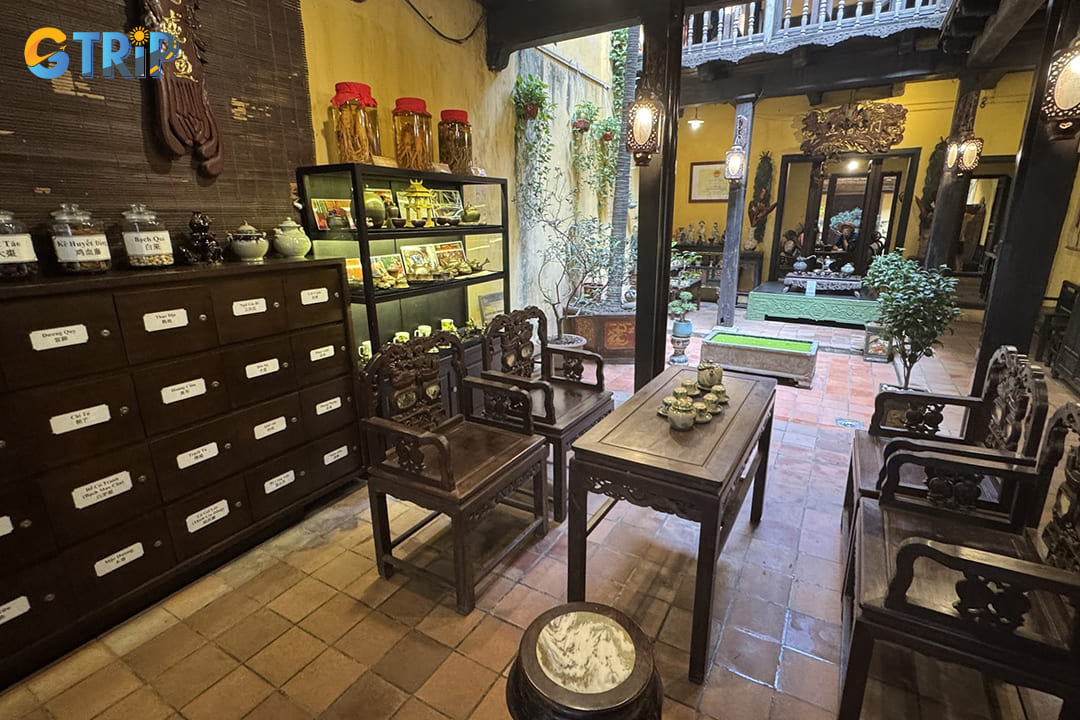
Planning a visit to Ma May Ancient House requires some preparation to fully appreciate this historical gem in Hanoi's Old Quarter
Nearby attractions from Ma May Ancient House
The charm of Hanoi's Old Quarter extends well beyond Ma May Ancient House, with several fascinating attractions within walking distance. Tourists can immerse themselves in the authentic local culture by exploring these nearby landmarks.
Dong Xuan Market
Just a short 7-minute walk north of Ma May Ancient House, Dong Xuan Market stands as Hanoi's largest indoor market and a commercial cornerstone of the Old Quarter since 1889. This four-story French colonial building houses hundreds of stalls under its distinctive roof.
The market caters to both locals and tourists, offering:
- Ground floor: Fresh produce, meat, seafood, and flowers, where local vendors display their goods in traditional Vietnamese market style
- Upper floors: Clothing, accessories, souvenirs, and household items at wholesale prices
- Food court: Authentic local dishes at affordable prices, perfect for sampling Hanoi's street food in a covered setting
For photography enthusiasts, the market's vibrant colors, bustling atmosphere, and architectural details provide countless opportunities for capturing the essence of Hanoi's commercial life. Visit in the early morning to witness locals bargaining for fresh ingredients or in the evening when the surrounding night market comes alive.
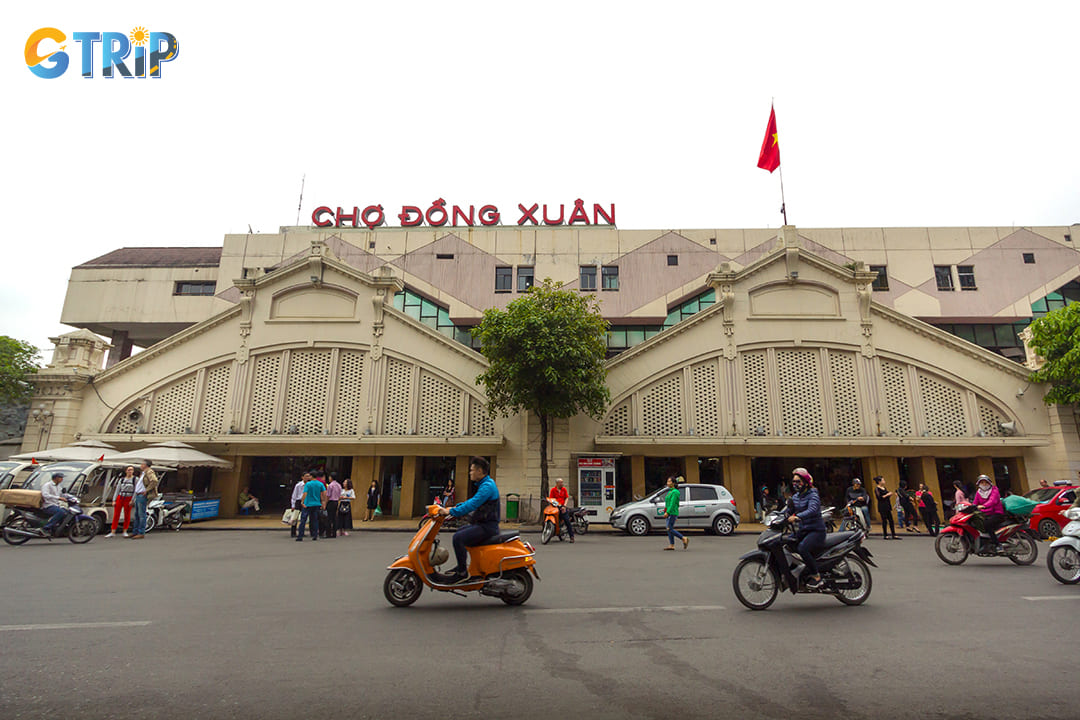
Dong Xuan Market stands as Hanoi's largest indoor market and a commercial cornerstone of the Old Quarter
Ta Hien Beer Street
Just a 5-minute walk southwest of Ma May Ancient House, Ta Hien Street is one of Hanoi’s most iconic nightlife destinations. Known to many as “Beer Street”, this short, pedestrian-friendly lane offers a dramatic transformation depending on the time of day. During daylight hours, it’s a quiet spot where you can enjoy local cafes, observe colonial-era architecture, and take photos without the crowds. But after 6 PM, the street comes alive with energy as low plastic stools spill onto the pavement, and a vibrant mix of locals and travelers gather for an evening of food, music, and drinks.
The signature experience here is sitting shoulder to shoulder with others on the sidewalk, enjoying a glass of bia hoi. Fresh draft beer that costs only 5,000 - 7,000 VND (about $0.25). It’s one of the most affordable beer experiences in the world. Street vendors offer a range of snacks, from grilled skewers and fried rice to boiled peanuts. It isthe perfect place to relax, socialize, and soak up the electric atmosphere of Hanoi after dark.

Ta Hien Street is one of Hanoi’s most iconic nightlife destinations
Bach Ma Temple
Believed to be the oldest temple in Hanoi, Bach Ma (White Horse) Temple sits just 3 minutes away from Ma May Ancient House. This spiritual gem dates back to the 9th century and holds profound significance in Hanoi's founding mythology.
The temple features:
- A main altar dedicated to Confucius and other deities
- An ornate red lacquered palanquin used in ceremonial processions
- Intricate wood carvings depicting scenes from Vietnamese history
- A beautiful white horse statue commemorating the temple's legend
According to local lore, King Ly Thai To built the temple after a white horse emerged from its grounds to guide him in constructing the city walls. You should observe proper temple etiquette by dressing modestly and speaking quietly. The temple is particularly atmospheric during morning hours when locals come to make offerings.
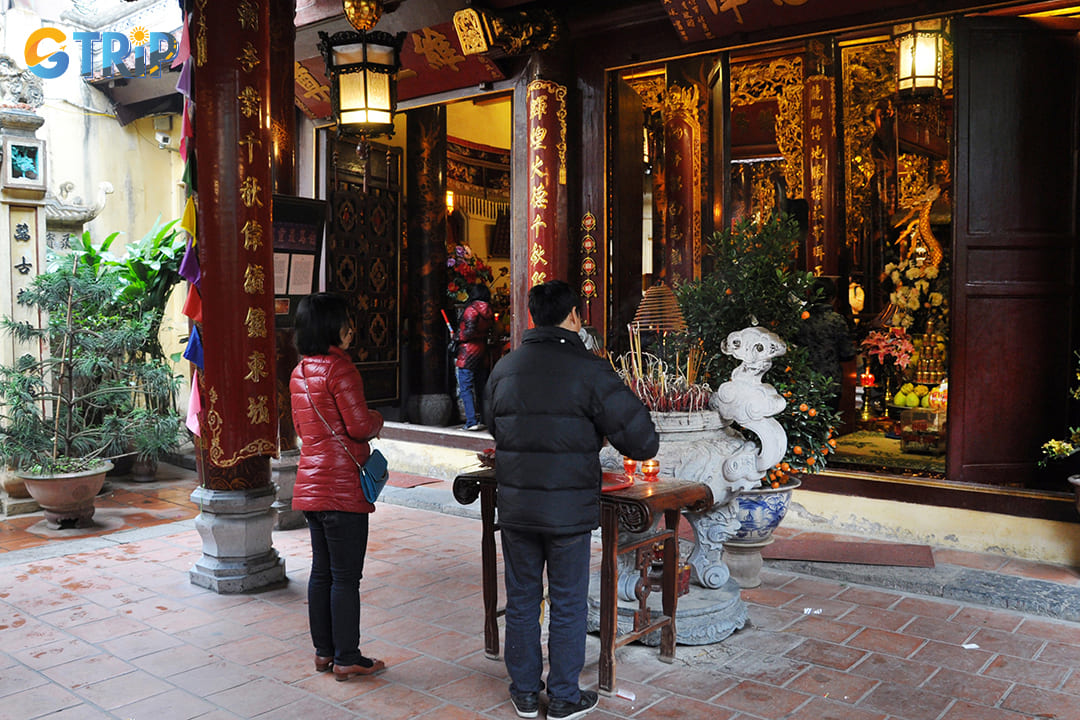
Believed to be the oldest temple in Hanoi, Bach Ma (White Horse) Temple sits just 3 minutes away from Ma May Ancient House
Hoan Kiem Lake
A scenic 8-minute walk south from Ma May Ancient House brings you to Hoan Kiem Lake, the beating heart of Hanoi. This picturesque freshwater lake spans approximately 12 hectares and serves as a peaceful retreat from the city's bustling streets.
Key attractions around the lake include:
- Ngoc Son Temple: Sitting on a small island accessible by the iconic red Huc Bridge
- Turtle Tower (Thap Rua): A stone tower on a tiny island commemorating the golden turtle legend
- Walking paths: Well-maintained routes circling the lake, perfect for morning exercises or evening strolls
- Weekend walking street: From Friday to Sunday evenings, the surrounding roads close to traffic for performances and night markets
The lake is steeped in Vietnamese folklore, most notably the legend of Emperor Le Loi. He was said to have returned a magical sword to a golden turtle in these waters after defeating Chinese invaders. Visit at sunrise to join locals practicing tai chi or at sunset when the lake's surroundings illuminate with colorful lights.
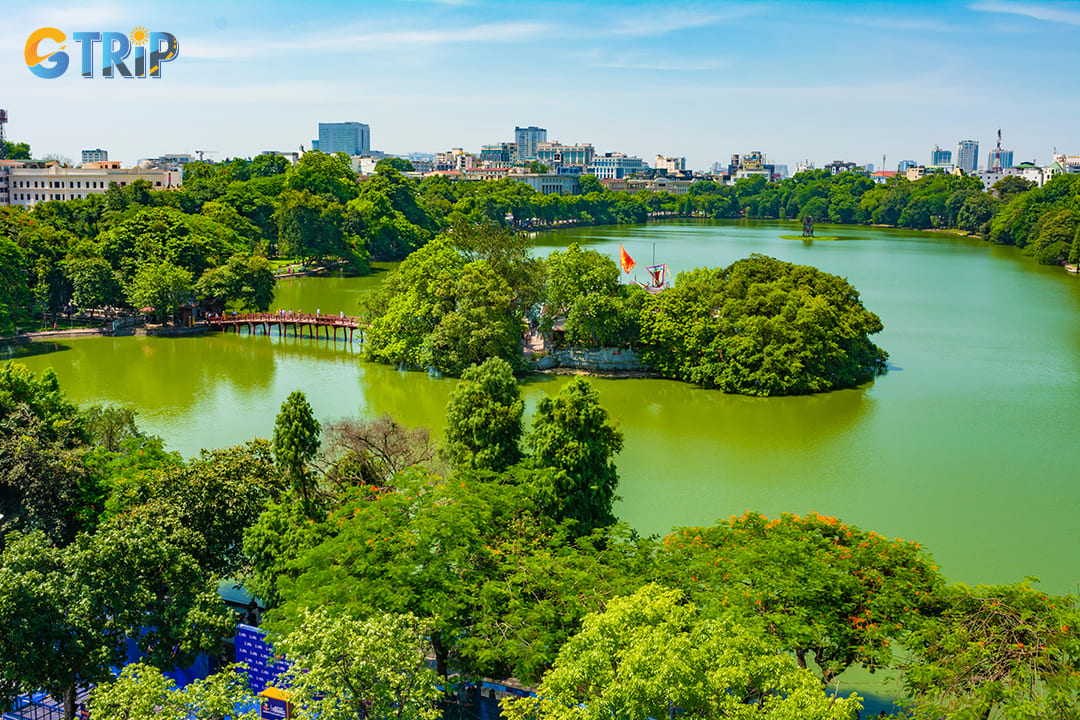
Hoan Kiem Lake spans approximately 12 hectares and serves as a peaceful retreat from the city's bustling streets
Ma May Ancient House is not just a beautifully preserved example of traditional Vietnamese architecture. It’s a gateway into the daily life, craftsmanship, and cultural values of Hanoi’s past. This 19th-century home offers tourists a unique opportunity to experience the elegance and simplicity of a bygone era. Every corner tells a story, inviting you to pause, reflect, and appreciate the quiet charm that contrasts with the lively energy just outside its doors.
For those looking to dive deeper into Hanoi’s rich heritage, GTrip - Vietnam Travel Agency offers curated tours that connect you with the city’s most meaningful sites. Book your Hanoi tour with GTrip today and let our local experts guide you through the traditions, tastes, and timeless stories that make this city truly unforgettable.

